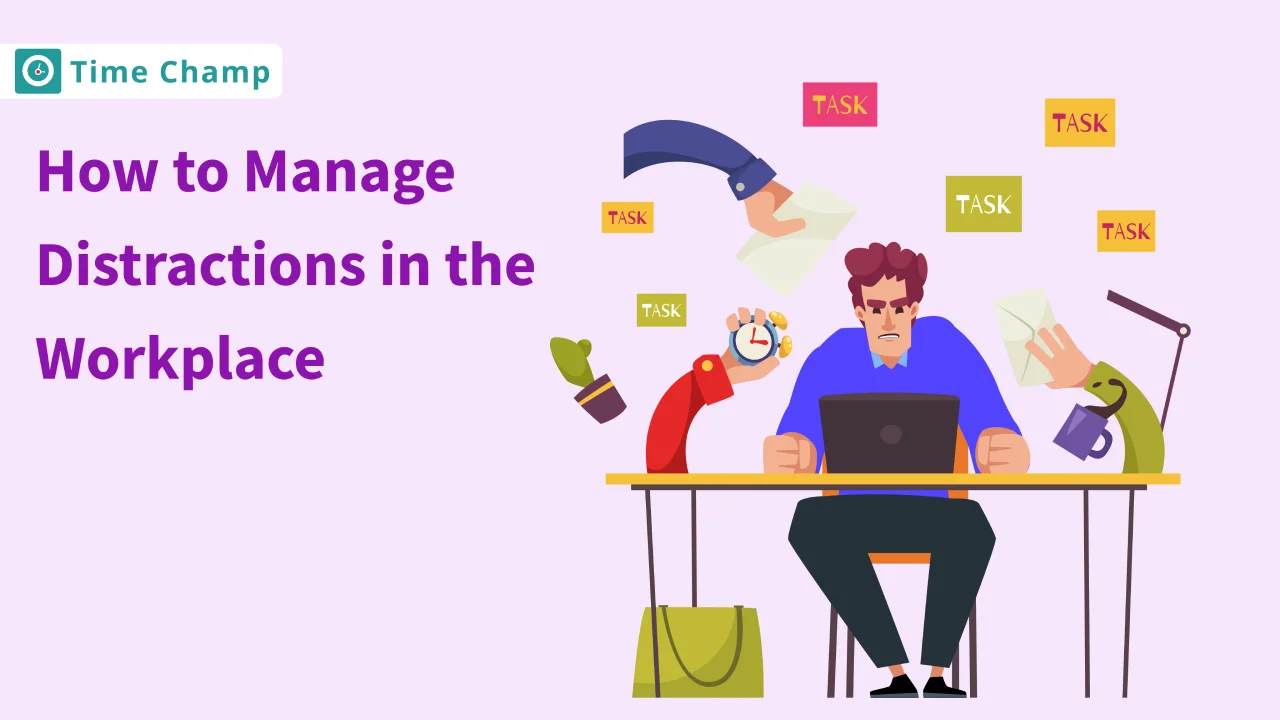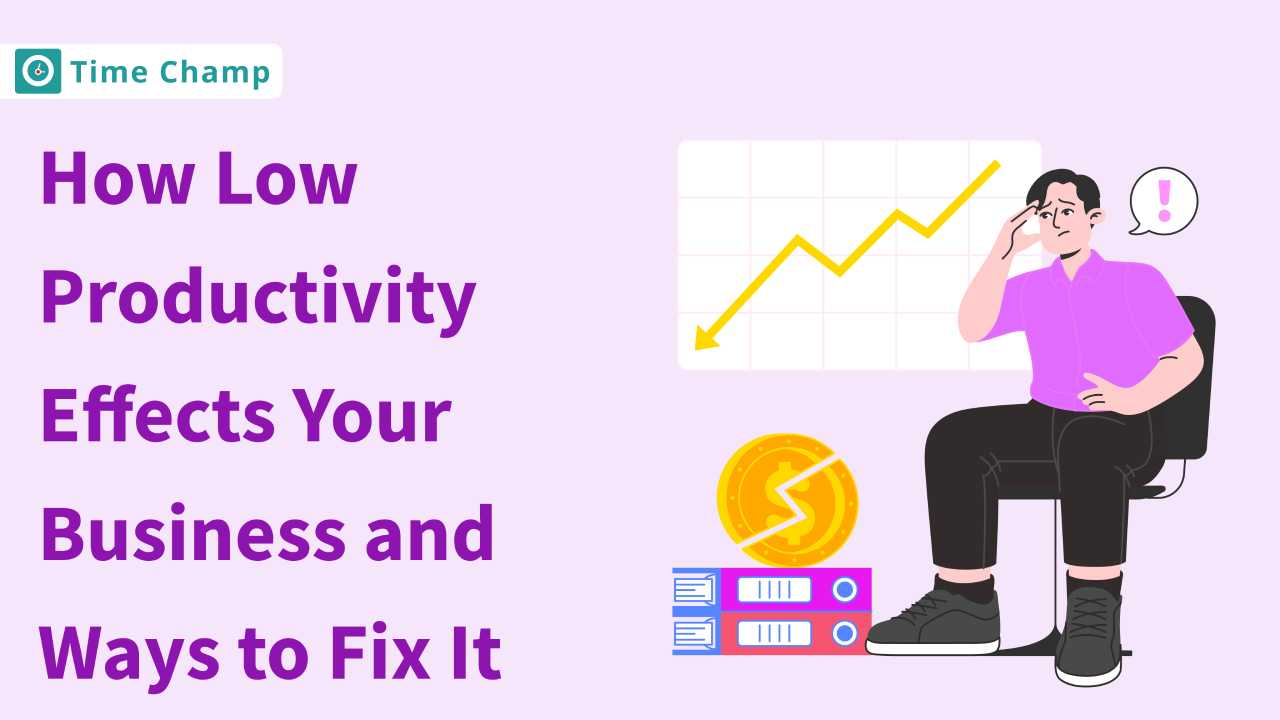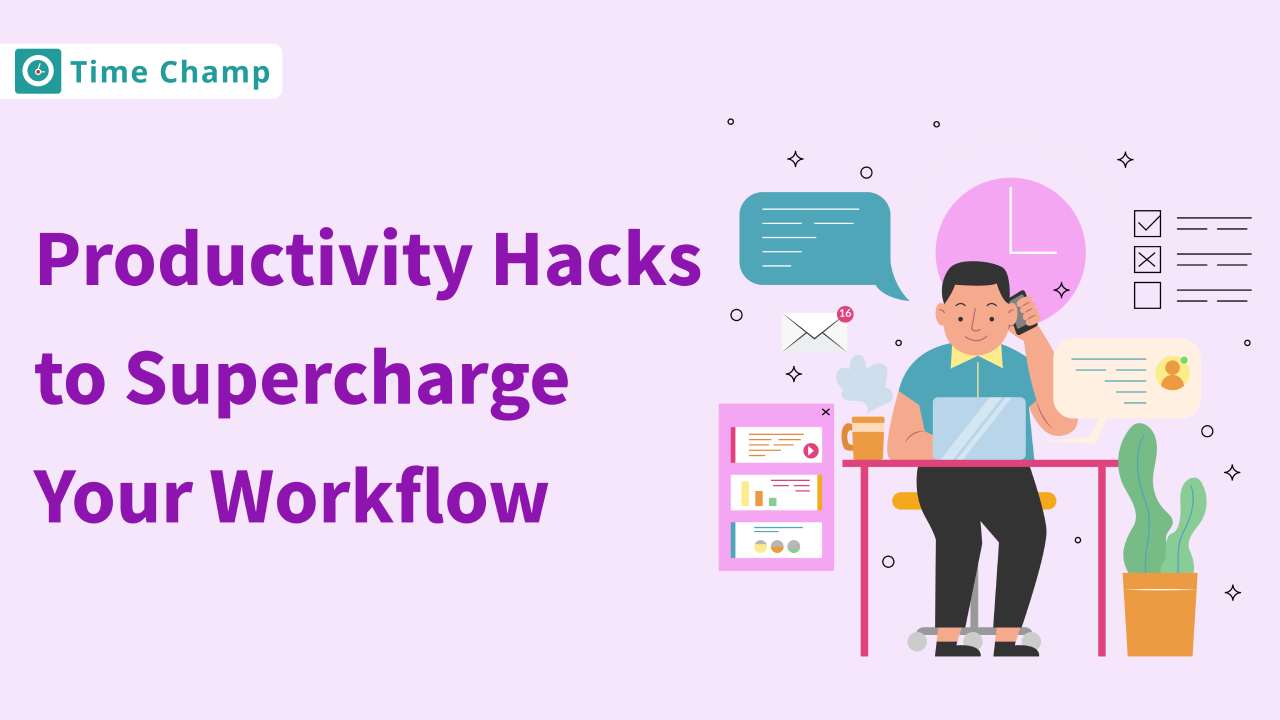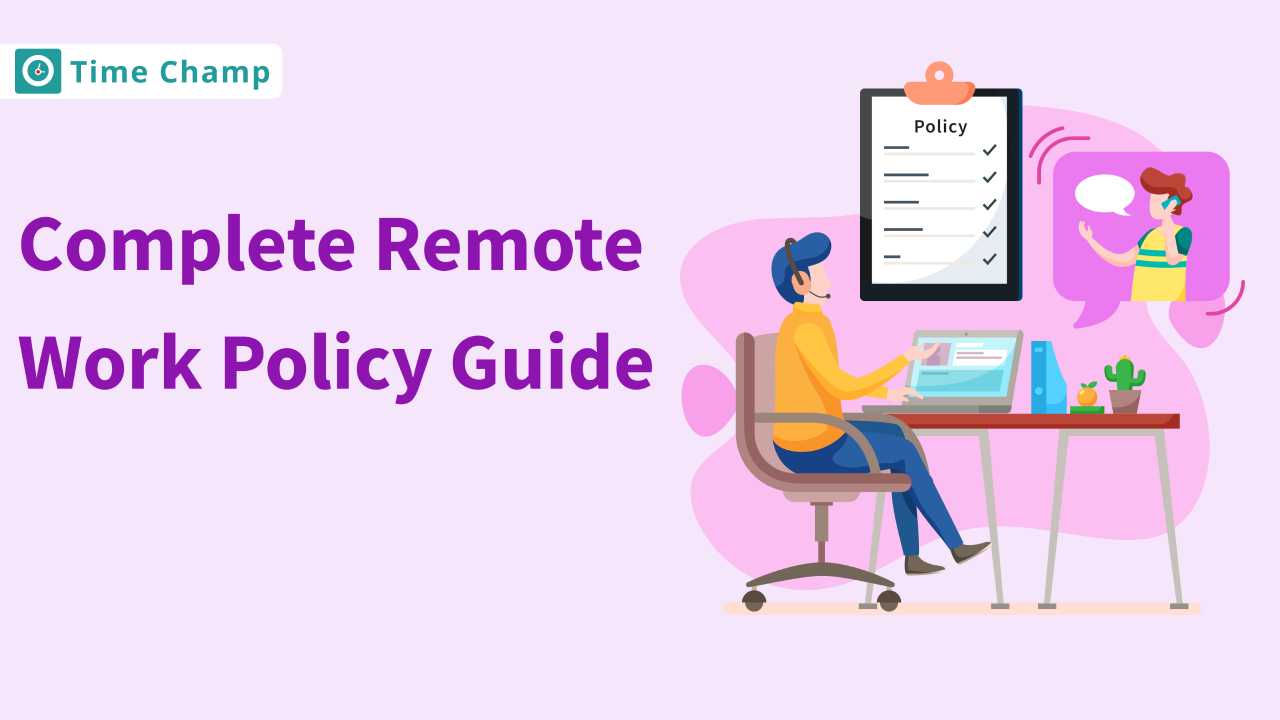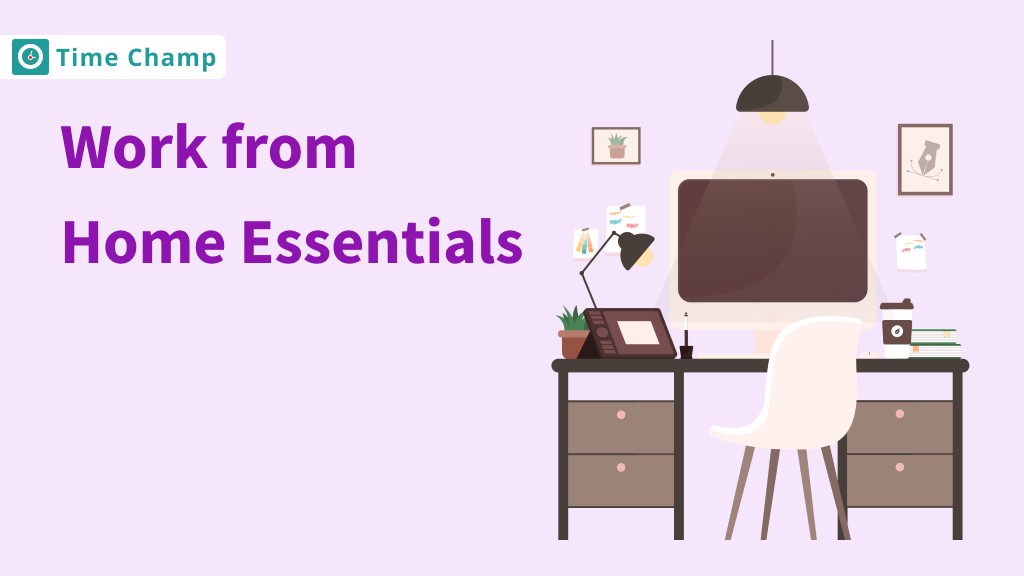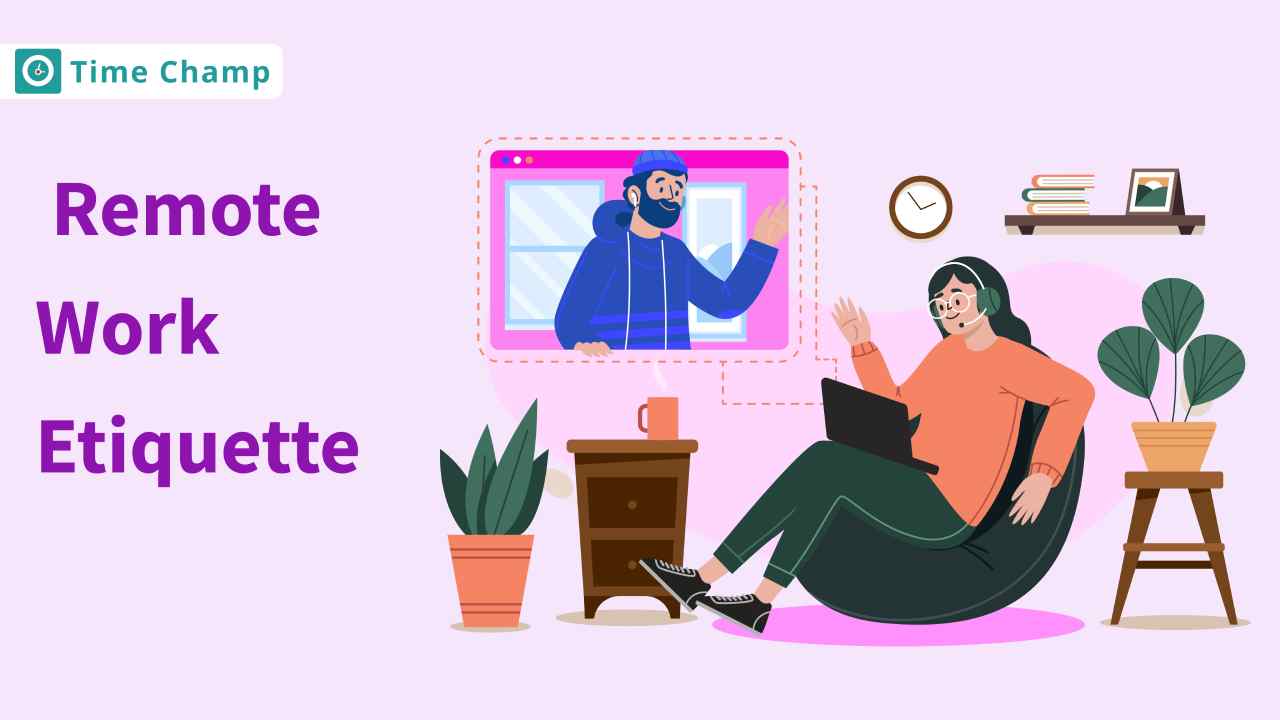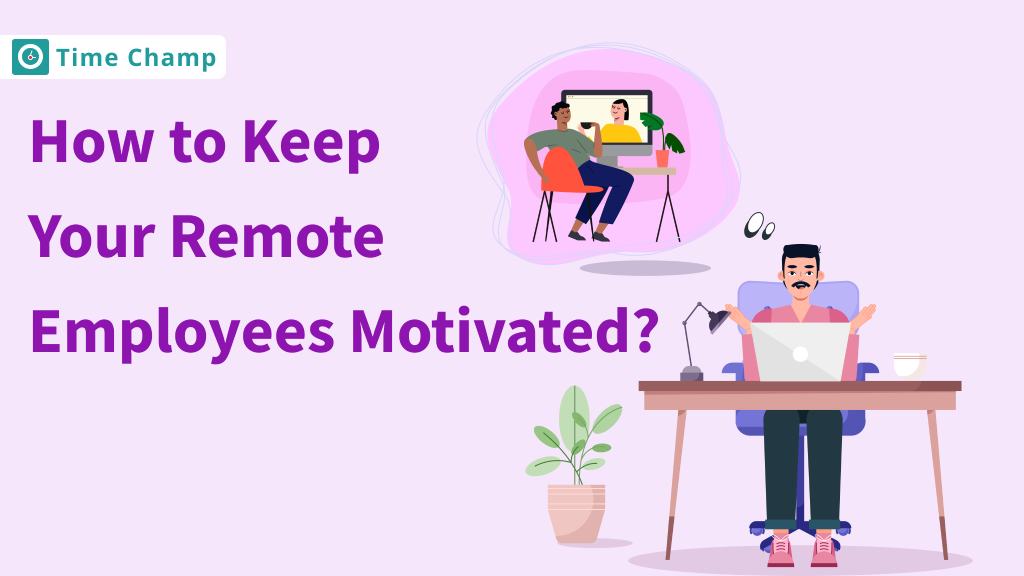Distractions are everywhere nowadays, whether the notification on your phone, just wandering around your thoughts, daydreaming or the trending baby Instagram reel that’s going viral. Distractions in the workplace are both visual and imaginary which disturbs the focus of the employee from work and impacts the overall performance and productivity if not taken care of in time.
As a manager or employer, it’s important to understand the impact of these distractions at the workplace and how they affect the productivity of the employee. Effective distraction management is crucial for maintaining efficiency and achieving goals in the workplace.
Let’s discuss the different ways to manage distractions in the workplace and how to enhance the productivity and performance of employees.
What are Workplace Distractions?
Workplace distractions are things that grab your attention away from your work. They can be anything from your phone buzzing to coworkers chatting nearby or even your mind wandering off. These distractions stop you from focusing on what you need to do and can slow down your work. Managing these distractions is key to staying productive and getting things done efficiently.
How do Workplace Distractions Impact Employee Productivity?
Distractions in the workplace impact employee’s productivity in many ways resulting in decreased focus and poor performance.
According to research conducted by the University of California, it takes approximately 23 minutes and 15 seconds to regain focus on work tasks after being distracted.
Distractions can increase stress levels and decrease overall productivity, focus, and job satisfaction.
Here are some of the impacts of distractions in the workplace.
- Decreased Focus: Constant interruptions and distractions make it difficult for employees to concentrate on tasks, resulting in reduced focus and attention to detail.
- Longer Completion Times: Research shows that distractions lead to longer completion times for tasks. According to a survey conducted by Udemy for Business, 54% of employees reported that distractions caused them to take longer to complete assignments.
- Decreased Quality of Work: Distractions can compromise the quality of work produced. A survey by CareerBuilder found that 51% of employees admitted that workplace distractions led to lower-quality outputs.
- Increased Stress Levels: Dealing with distractions can heighten stress levels among employees. The Udemy for Business survey revealed that 70% of respondents experienced increased stress due to workplace distractions.
- Negative Impact on Morale: Workplace distractions can also impact employee morale and job satisfaction. The CareerBuilder survey indicated that 38% of employees felt less satisfied with their jobs due to distractions in the workplace.
12 Most Common Distractions in the Workplace
Here are some of the most common distractions in the workplace.
1. Social Media
Social media can distract you a lot because of all the notifications and scrolling. It’s like having a buzzing bee in your ear, it’s hard to ignore! Plus, it’s easy to spend too much time checking likes and comments instead of working, kind of like getting lost in a never-ending loop.
Management Approach: Try setting specific times to use social media, like during breaks, to help you stay focused on your tasks.
2. Email Overload
Getting too many emails can mess up your concentration and how you work. It’s like having a constant stream of buzzing bees around you, it’s hard to focus! Always checking and replying to emails can steal time from important things you need to do, like trying to catch fish with a net full of holes, it’s not very effective.
Management Approach: To deal with this, try managing your emails in batches or only checking them at certain times, so they don’t distract you all day.
3. Meetings
Meetings are important for talking and working together, but sometimes they go on for too long and don’t stay on topic. It’s like having a train that’s always running late and never reaches its destination, it’s frustrating! This can take people away from what they need to do, like trying to follow a road map with too many detours, it’s confusing and wastes time.
Management Approach: To make meetings better, have a clear plan and goals so everyone knows what to talk about and can stay focused.
4. Noise
Whether it’s chatter from colleagues, ringing phones, or construction outside, excessive noise in the workplace can make it difficult to concentrate and complete tasks efficiently. It’s like trying to read a book while sitting next to a loudspeaker, it’s hard to focus on the words! Plus, all that noise can feel like a giant wave crashing over you, making it hard to keep your head above water.
Management Approach: Invest in noise-canceling headphones or finding quieter areas to work can help minimize distractions from ambient noise.
5. Multitasking
While it may seem like a productivity booster, multitasking often leads to decreased efficiency and quality of work as attention is divided among various tasks. It’s like trying to juggle too many balls at once, you’re more likely to drop them and make a mess.
Management Approach: Prioritize tasks and focus on completing one task at a time to improve efficiency, concentration, and productivity.
6. Personal Issues
Sometimes, things from our personal lives can make it hard to focus at work, which can affect how well we do our job. It’s important to find a balance between our stuff and our work.
Management Approach: One way to do this is by practicing mindfulness, which can help us keep our worries separate from our work.
7. Internet Surfing
Going on the internet for fun instead of doing work can waste a lot of time and make it hard to get things done because it’s like getting lost in a maze of distractions. You might start by checking one thing, but then end up spending hours clicking through different sites without realizing it. It’s a bit like going down a rabbit hole.
Management Approach: To avoid this, you can use tools like website blockers, internet usage monitoring software, or browser extensions to stop yourself from going on distracting websites while you’re supposed to be working.
8. Office Gossip
Chatting about things unrelated to work or hearing gossip from others can make it tough to concentrate. It’s like having a bunch of noise in your head that makes it hard to think about what you’re supposed to be doing. Plus, it can make you feel like you’re not really in control of your thoughts and focus.
Management Approach: Try to keep conversations focused on work to avoid distractions and maintain a positive atmosphere.
9. Workplace Politics
Dealing with office drama and conflicts can be tiring and distracting. It can use up a lot of time and energy that could be used for work. Plus, it can make people feel uncomfortable around each other and make the office feel not so nice to be in.
Management Approach: Try keeping things professional and focus on the work we’re here to do, to create a positive and productive work environment.
10. Cluttered Workspace
When your desk or workspace is messy, it can make your mind feel messy too, making it hard to focus and causing stress. Plus, constantly searching for things in the clutter can waste time and add to your frustration. Taking a few moments to tidy up can help clear your mind and make it easier to focus on your tasks.
Management Approach: Take a few moments to tidy up that can help you clear your mind and make it easier to focus on your tasks.
11. Uncomfortable Environment
If your workspace is uncomfortable like if your chair hurts your back or the lighting is bad, it can bother you and make it tough to get stuff done. It’s like trying to concentrate while you’re sitting on a prickly chair or in a dimly lit room.
Management Approach: You can ask for changes like a better chair or lighting to make your workspace more comfortable, so you can focus better.
12. Procrastination
Waiting until the last minute to do things can make you rush and feel more stressed, like when you realize you have a big project due tomorrow and you haven’t even started yet. It’s a bit like scrambling to finish a puzzle just before bedtime.
Management Approach: Try breaking tasks into smaller parts and giving yourself rewards when you finish them. This can help you manage your time better and get things done without feeling overwhelmed.
What are the Benefits of Implementing Workplace Distraction Tactics
Here are some of the benefits of implementing workplace distraction tactics in your organization.
1. Increased Productivity
- Minimizing distractions allows employees to focus better on their tasks.
- With fewer interruptions, work can be completed more efficiently and in less time.
2. Enhanced Concentration
- Implementing distraction management tactics helps employees maintain concentration on their work.
- Improved focus leads to higher-quality output and fewer errors.
3. Improved Work Environment
- Creating a distraction-free workplace fosters a more positive and supportive atmosphere.
- Reduced stress levels lead to increased motivation and better performance among employees.
4. Better Time Management
- By reducing distractions, employees can allocate their time more effectively.
- They can prioritize tasks and meet deadlines more efficiently.
5. Increased Employee Satisfaction
- Providing a distraction-free environment demonstrates that the organization values its employees’ focus and well-being.
- Employees who are happier tend to be more engaged and have higher retention rates within the company.
6. Enhanced Collaboration
- Minimizing distractions allows for more effective communication and collaboration among team members.
- Teams can work together seamlessly without interruptions, leading to better teamwork and results.
7. Reduced Stress Levels
- Workplace distraction tactics help relieve stress by creating a calmer work environment.
- Employees feel less overwhelmed and more in control of their workload.
8. Higher Morale
- A distraction-free workplace promotes a sense of accomplishment and pride in work.
- Employees feel valued and supported, leading to higher morale and overall job satisfaction.
Implement and Manage Distractions in the Workplace with Time Champ
By using Time Champ, you can easily identify and keep track of distractions in the workplace, enabling you to optimize your work environment for better focus. It helps you identify common distractions like social media or noisy environments and keeps tabs on your progress. With Time Champ, you can stay focused and maintain productivity in your work.
Find out about more features like this that help you implement effective distraction tactics- Sign up now
- Identify Distractions: Easily find distractions like social media, email overload, or noisy surroundings, so you can deal with them quickly. Identify other common distractions unique to your work environment, such as unnecessary meetings or personal errands, to maintain focus.
- Task Prioritization: Organize your tasks effectively, making sure important work comes first, and distractions take a back seat. Prioritize tasks based on deadlines, importance, and impact, and manage tasks effortlessly to ensure you’re always working on what matters most.
- Take Smart Breaks: Plan breaks to recharge without getting lost in distractions, keeping your productivity on track. Use Time Champ to schedule short breaks for relaxation or longer breaks for activities that boost creativity and energy levels.
- Work with Purpose: Schedule focused work sessions to get things done without interruptions, maximizing your productivity. Allocate specific time blocks for different tasks, such as brainstorming, problem-solving, or creative work, to maintain momentum and efficiency.
- Progress Tracking: Keep an eye on your progress to make sure distractions don’t divert your productivity goals. Use Time Champ’s progress tracking feature to monitor task completion and adjust your schedule as needed to stay on target. Regularly review your progress to identify patterns and areas for improvement.
- Use Productivity Tools: Use Productivity Monitoring and tracking tools like Time Champ which comes with advanced productivity tracking features and helps you manage and track your employee performance and reduce distraction effectively. Prioritize tasks, track time, and block distractions easily. Stay focused on important tasks, limit non-work-related activities, and improve teamwork for better productivity.
Try out Time Champ and effortlessly implement workplace distraction tactics that align with your business requirements- Book a demo now
Also Read
How to Handle Employee Slacking Off at Work? Tips and Strategies
Enhancing Employee Productivity: Strategies without Formulas
Workplace distraction indicates to anything that diverts or interrupts an individual’s attention away from their tasks or responsibilities while at work.
Managing distractions is crucial because it helps maintain focus and productivity, leading to better performance and job satisfaction.
Common distractions in the workplace include social media, noisy environments, email overload, frequent interruptions, and personal errands.
You can identify distractions by observing what disrupts your focus, tracking time spent on non-work activities, and seeking feedback from colleagues.
Strategies for managing distractions include prioritizing tasks, setting boundaries, using productivity tools, creating a supportive work environment, and practicing time management techniques.
Address distractions caused by colleagues or the office environment by communicating openly, setting expectations, establishing designated quiet zones, and using noise-cancelling headphones if necessary.
To stay focused, minimize multitasking, schedule focused work sessions, take regular breaks, and eliminate or minimize distractions by using tools like website blockers or distraction-free apps.
Technology can both contribute to and help manage distractions. While it can be a source of distraction, various productivity apps and tools are available to help individuals track and manage their time effectively.
